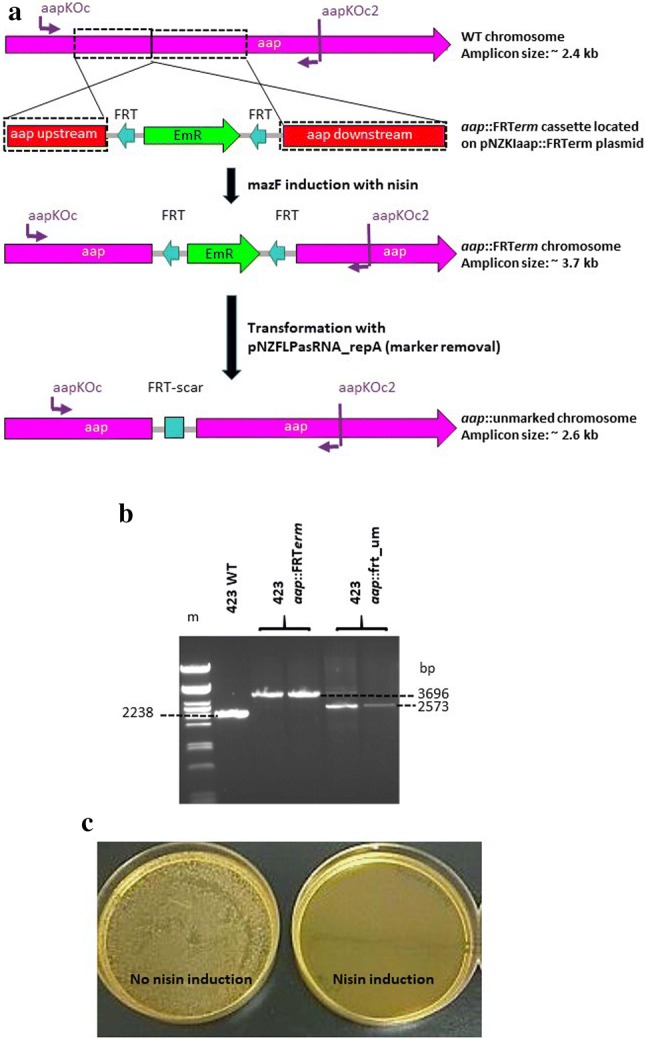Fig. 4.

Gene inactivation and integration via homologous recombination into the genome of L. plantarum 423 at the aap adhesion gene locus to create L. plantarum 423 aap::FRTerm and L. plantarum 423 aap::frt_um (um-unmarked). a Homologous recombination between the wild-type (WT) L. plantarum 423 chromosome and the aap::FRTerm cassette and selection of unmarked aap double-crossover mutants. Boxed regions show the upstream and downstream regions of homology (~ 0.9 kb) on the WT L. plantarum 423 chromosome and plasmid pNZKIaap::FRTerm knock-in (KI) vector. Cells harboring the aap KI vector were selected on Cm and Em, followed by nisin induction for MazF toxin expression to select for mutants that have lost the plasmid backbone bearing cat and mazF genes. Double crossover mutants were selected and screened by PCR using the primer combinations indicated in purple. b PCR amplification of WT L. plantarum 423 and aap insertion mutants using the primer pair indicated in panel A. Additionally, the Em resistance marker was recycled via excision by FLP recombinase. (m) Lambda DNA digested with PstI (NEB). Amplicons from one WT, two aap::FRTerm insertion mutant and two aap::unmarked colonies are shown. c MRS agar plates showing the effectiveness of the repA asRNA induction of FLP recombinase-bearing plasmid loss in the absence of nisin (no nisin induction) and in the presence of nisin (nisin induction). Colonies that have lost the repA-bearing plasmid were isolated via replica plating
